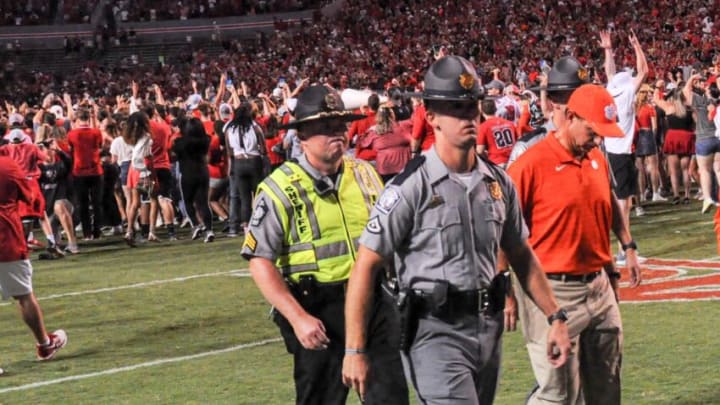Many decry early season rankings, arguing that the AP and coaches shouldn’t release a Top 25 until October—but polls provide snapshots of public perception.
For five seasons on this website, I was responsible for projecting the order of the Top 25 poll on Saturday nights before AP voters released their hierarchy of teams on Sunday afternoons. When the College Football Playoff rolled around, I would have to get out of the minds of the 60-odd AP voters and into the heads of the dozen or so CFP selection committee members.
It is a unique challenge that exposes the folly of polling, especially through the first month of the season. By the time the College Football Playoff selection committee releases its first batch of Top 25 rankings, we have a fairly good idea of how teams rate within their conferences and between leagues. But these first months involve large swings as overrated teams fall from their perch and underrated teams well up from the land of others receiving votes to make it above the cut line.
So much of the preseason polls and the subsequent voting through that first month is based on a range of factors. Previous year’s results, including the oft-discussed bowl bump, play a major role in assessing team position. Returning starters and returning production are another factor, as are the quality of new recruits and the quality of players stepping in as first-time starters. Changes in coaching staffs also change the complexion of how those initial preseason rankings look, whether it is the AP Top 25 or the USA Today Coaches Poll.
A common argument among fans centers on whether these rankings should even come out before we have a body of work on which voters can base their ballot decisions. Preseason iterations of the Top 25 won’t be going away any time soon, though, as they spur controversy and conversation from the beginning of the season through the very end.
I am currently working on a project analyzing the impact of the Top 25 rankings as they evolve throughout a season, but in this week’s Sunday Morning Quarterback it seems less important to do a deep dive into numbers than to understand the philosophical reasons why we ought to embrace early rankings and allow them to inform chaos as it happens in real time.
Why early Top 25 rankings matter
The simplest answer to the question of why early rankings are so significant is that they draw eyeballs. We release a Way-Too-Early set of Top 25 projections for the upcoming season immediately after the confetti has started dropping on the champions of the current season. We continue to update those rankings after recruiting has completed, and after spring practices, and again before the new season commences. These posts are consistently among the most popular articles on a weekly basis.
Fans read these posts because we want to perceive our team doing well relative to other programs. But the numbers next to teams’ names also help explain chaos as it happens in real time.
The 2007 season made so much sense as an agent of chaos precisely because of the numbers. Michigan’s loss to Appalachian State was so significant because it was a top-five Wolverines team collapsing at the Big House against FCS competition. The number of top-two teams that collapsed from week to week was only relevant because of the No. 1 or No. 2 situated in front of the team name.
Rankings provide a weekly snapshot of how we as a gridiron-obsessed society collectively comprehends the pecking order of a disaggregated regional sport played on a national scale. They provide a quick, legible shorthand to calibrate our perceptions of juggernauts and underdogs, making that information accessible to everyone across the country.
Those numbers, silly as they seem before we’ve seen a team hit the field, provide a starting point for debate. They also trace in real time the chaos that can unfold in a season like 2007, or like we might be watching this year.
So if you’ve found yourself in the past complaining about why Top 25 lists proliferate before summer turns to fall, you might want to reconsider. It is far easier to understand chaos in retrospect than it is in the moment, but in college football at least we have a system that shines light on that chaos as it happens.
As far as tools go, Top 25 rankings serve a critical purpose—as long as we understand their functionality and don’t expect them to do a job they were never intended to do.
